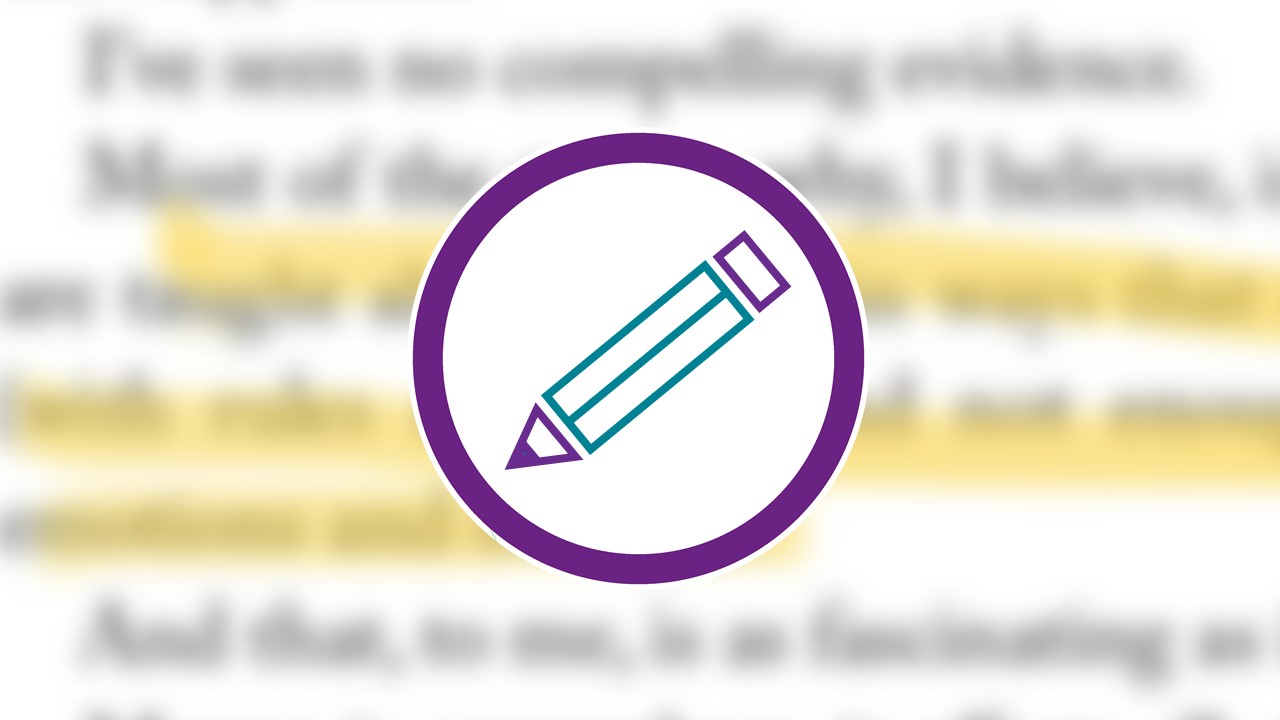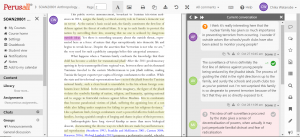Collaborative Reading using Annotation Software
In the context of blended/online learning, creating community among students was a challenge. Moreover, even pre-COVID, students tended to work isolated from each other outside of tutorials/seminars. Peer feedback should be part of the learning process but this was largely missing from the curriculum.
Chika used an annotation software called Perusall – but other tools provide similar annotation capabilities e.g. Hypothes.is. Students had to do their weekly required readings on this platform. She divided students into small groups of 7 or 8, which were the same groups for Perusall and in seminars. This meant that students could continue their small group discussions across synchronous and asynchronous interactions. The Perusall interface is intuitive and aesthetically pleasing, enabling easy conversations.
Evaluation / Student Feedback
- ‘I love perusall! I love being able to engage with other people and hear their perspectives; it’s really interesting and definitely helps my understanding. I also like getting marked every week – it motivates me to engage deeper with the readings. Overall I think perusall really enriches the whole reading experience – I wish all my courses used it!’
- ‘I liked the small groups that we used on perusall and how we were able to discuss the readings in the same small groups in the breakout rooms and then go back in the bigger zoom and talk through it’.
- ‘I especially loved using perusall and I wish it was a feature in all my classes! I believe it enriched the reading process as you could gain a different perspective from reading the thoughts of your peers. I also think it forced me to be more active in my reading since I wanted to make insightful comments, compared to my usual process of idly highlighting and simple note-taking’.
Benefits
- Students liked that Perusall pushed them to clearly articulate their opinions/queries about readings, learn from each other, understand readings better, and think critically about texts.
- Students also appreciated that Perusall deadlines forced them to do readings on time, in a scheduled manner.
- Perusall also allows comments to be posted anonymously, helping students who might struggle with anxiety in public settings.
- Perusall has an automatic scoring system that evaluates students’ comments on a scale of 1-3. The scores can be downloaded as an Excel spreadsheet, making it easy to mark.
- Requires low level of technical expertise/technical confidence.
Top Tips
- Create small groups for Perusall (ideally 7 – 10 students each) and continue the same groupings for tutorials/seminars.
- Make sure the collaborative reading is used strategically so it complements the overall design and intended learning outcomes of the course unit. It should not be an activity that is separate from the rest of the teaching delivery.
- You can spend hours reading student comments on Perusall. The trick is to be selective with what you read and refer to some of the comments/questions in class.
References
- To get a sense of how Perusall works, watch this 8-minute video tutorial: https://youtu.be/ODE6v4YOo0E.
- There are various applications that allow you to do what Perusall does. If you are interested in trialling Hypothes.is please contact Humanities eLearning.

School: Social Sciences
Academic: Chika Watanabe
Course: SOAN20801 The Anthropology of Kinship, Gender and Sex
Themes: Collaborative Learning
Ref. 012


0 Comments